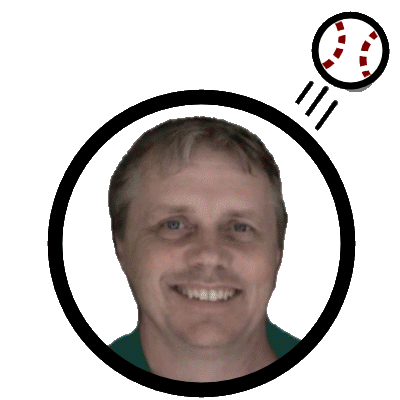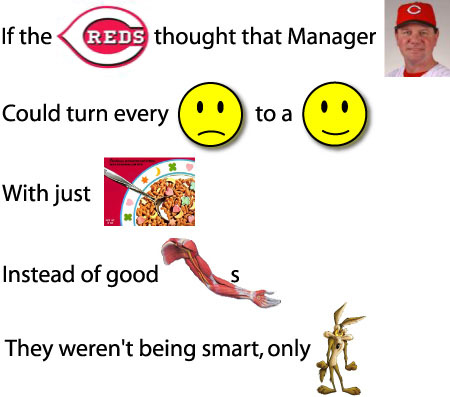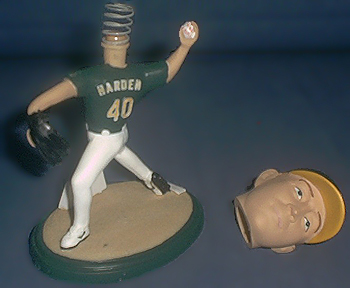Cliff Pennington is a 5’11”, 180 lb. shortstop out of Texas A&M. He was one of three college shortstops taken in the first round, along with Troy Tulowitzki (7th to the Rockies) and Tyler Greene (30th to the Cardinals). Pennington hit .363/.453/.561, with 37 walks, 25 strikeouts, and 29 stolen bases in 212 ABs.
Here’s what Bryan Smith of Baseball Analysts wrote about Pennington before the draft:
The least-known player of the group is Cliff Pennington, known as a scrappy player that impresses scouts and statheads alike. Pennington has great contact skills, runs well, and shows very good defense up the middle. What power he has shown this season is unlikely to transfer over much professionally, though he could very well be hitting 30 doubles a year in the Bigs. I might go as far to say that Pennington is the most likely of the group to be a league-average player across the board in the Majors, as Cliff looks to be everything Russ Adams was coming out of college.
With Bobby Crosby at shortstop for the next five years, you’d have to think that if Pennington moves quickly up the ladder, he will eventually move over to second base.
Update: According to this Pennington fan page, Pennington went 2-for-3 with 2 walks in his battles against Huston Street. Now I’m really impressed.
Also, Bryan expands upon his comparison of Pennington to Aaron Hill here.
* * *
Travis Buck was the A’s second pick, a 6’2″, 205lb. outfielder from Arizona State. In the same Baseball Analysts article, Bryan was less impressed with Buck, who didn’t have a great year:
While Buck was Baseball America’s top-ranked outfielder heading into the season, unimpressive BB and ISO numbers have led to a freefall this year.
Buck hit .398/.451/.545, with only 4 home runs in 257 ABs in 2005. In 2004, he hit .373/.486/.573, with 9 home runs in 225 ABs.
* * *
With their next three picks, the A’s (shockingly!) went for high school pitchers: Craig Italiano, Jared Lansford, and Tommy Manzella.
Italiano, from Texas, was regarded as the hardest-throwing high-school pitcher in the draft. He’s raw, but talented. Zachary thinks his arm is going to fall off.
Jared Lansford is the son of former A’s third baseman Carney Lansford. From what I’d seen, he wasn’t projected to go quite as early as the second round, but given the connections, there was probably a deal made in advance. Lansford is a pitcher, who throws around 94mph.
* * *
Jimmy Shull from Cal Poly SLO was a curious choice in the fourth round. His 2005 stats are not very impressive: 8-7, 4.61 ERA, 85/33 K/BB, 111.1 IP. His 2004 stats were better, with 102/26 K/BB ratio in 99.2 IP.
So if you look at the choices of Buck and Shull, perhaps we’re seeing that the A’s are finding hidden value in players whose current year wasn’t as good as the previous one.
* * *
The next three picks after Shull were all high schoolers: Scott Deal (5th round) and Kevin Bunch (7th round) are pitchers, while Justin Sellers (6th round) is a shortstop.
Six of the first nine picks are high schoolers? Did someone kidnap Billy Beane before the draft? This draft has been very surprising.
* * *
Back to normalcy: college pitchers in rounds 8-11:
Round 8: Jason Ray from Azusa-Pacific University had some pretty nice stats: 5-2, 3.45 ERA, 72/32 K/BB in 73IP.
Round 9: Trey Shields had unimpressive statistics in 2005: 1-1, 5.50 ERA, 15/5 K/BB, 18 IP. But he was returning from Tommy John surgery the year before, and he’s 6’7″, 230 lbs.
Round 10: John Herrera is tall, too: 6’6″, 195 lbs. His stats at Lubbock Christian are nice, too: 9-4, 2.80 ERA, 117/35 K/BB, 86.2 IP.
Round 11: Steve Kleen is an interesting pick. He was the Pepperdine closer (4-3, 17 saves, 1.75 ERA, 47/18 K/BB, 51.1 IP) but also had decent stats as a first baseman (.350/.436/.525). He fits the A’s tradition of selecting pitchers who have both good stats, and good overall athletic ability.
* * *
Eleven rounds, and the A’s have selected ten pitchers.
* * *
Round 12: Finally, another position player: Jeff Baisley from South Florida. Hit .356/.415/.572.
* * *
Round 13: What is this? A joke? Michael Massaro from Colorado State is listed as a 5’10”, 155 lb. LHP. He has horrible pitching stats: 2-4, 6.96 ERA, 34/22 K/BB, 42.2 IP. Maybe they intended to list him as an outfielder…his hitting stats are better: (.354/.401/.531, 16 SB in 17 attempts, 243 ABs). But then again, this is Colorado, where the air is thin…
* * *
Round 14: Brad Davis, Lewis-Clark State College. 6-2, 2.14 ERA, 58/10 K/BB, 63 IP.
* * *
Round 15: Boy, where do they find these schools? In the last round, they picked someone from Lewis-Clark State College (which is different, apparently, from Lewis & Clark University), and now the A’s draft a player from another school I never heard of, Fort Hays State University. If you’re from a school like that, your stats better jump off the page, and 3B Jeff Bieker’s do: .413/.502/.880 !, 23 HR in 184 ABs. I have no idea what kind of competition he was up against, or what kind of ballparks he played in (no one else on his team had more than 7 HRs), but you gotta think that power like that is worth a gamble.
* * *
Round 16: Justin Smoak, a high-school 1B, was listed as Baseball America’s 95th best overall prospect, with comparisons to Mark Grace. Since he lasted this far, he’s probably headed to college, but the A’s will take a flyer at signing him.
* * *
Round 17: A prototypical Moneyball pick. Isaac Omura, 2B, Hawaii. .369/.464/.568.
* * *
And finally, the last pick of the day, Round 18: Catcher Anthony Recker, Alvernia College, is similar to Jeff Bieker: stats that jump off the page at a Division III school. He hit .461/.544/.855, with 16 HR in 165 ABs.






